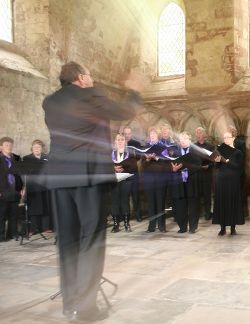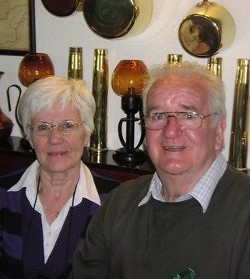Gordon Parry was a member of the Flint Male Voice Choir and his Musical Director, John Stone, returns to Wales in May with his new choir-Andante Chamber Choir, to benefit both NA and the Cathedral.
 By special invitation, John’s unaccompanied choir travels from Scotland to perform in North Wales at St. Asaph Cathedral at 7.30pm on Saturday 30th April with two sequences:
By special invitation, John’s unaccompanied choir travels from Scotland to perform in North Wales at St. Asaph Cathedral at 7.30pm on Saturday 30th April with two sequences:
First, ‘A Heaven Full of Stars’, featuring modern motets from Calman Cooman, James MacMillan, Bob Chilcott, Gabriel Jackson and Stephen Paulus, as well as the haunting ‘STARS’ by Eriks Esenvalds which includes tuned wine glasses!
The second sequence - ‘Shall I compare thee to a red, red rose’ is when the choir explores settings of Shakespeare, in this, his 400th anniversary year, together will three settings of Robbie Burns, including James MacMillan's magical ‘SO DEEP - My Love Is Like A Red Red Rose.’
 Andante Chamber Choir was formed in 2007 by John Stone and is a group of singers who decided they wanted to sing the ever widening a-cappella repertoire – choral music without accompaniment - singing everything from plainsong and polyphony to pop. Choir members hail from all corners of Berwickshire as well as further afield in the Scottish Borders and North Northumberland.
Andante Chamber Choir was formed in 2007 by John Stone and is a group of singers who decided they wanted to sing the ever widening a-cappella repertoire – choral music without accompaniment - singing everything from plainsong and polyphony to pop. Choir members hail from all corners of Berwickshire as well as further afield in the Scottish Borders and North Northumberland.
The Advocacy thanks the Parrys and John and Lesley Stone and his Choir for donating their time and effort to our cause. For more detail about the 30th April concert and other concerts by Andante Chamber Choir, go here:Andante Chamber Choir website